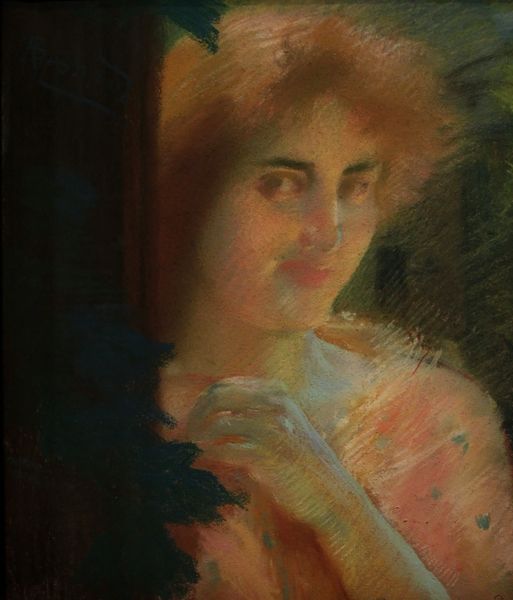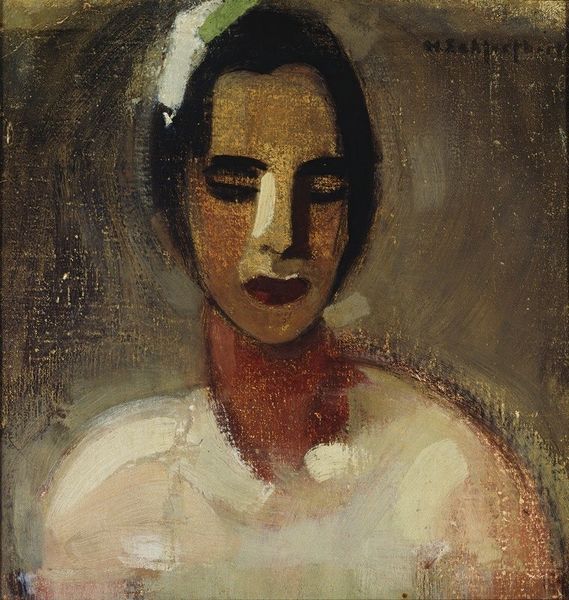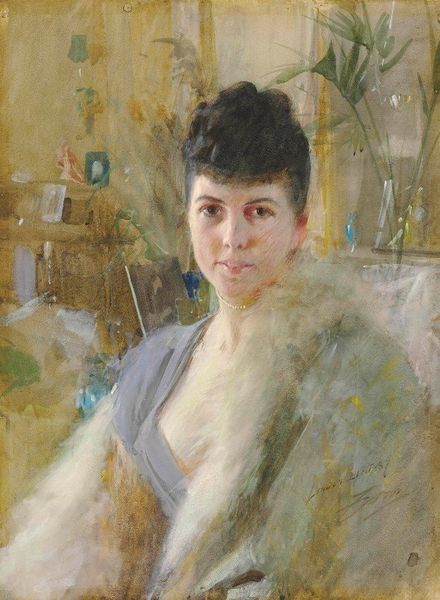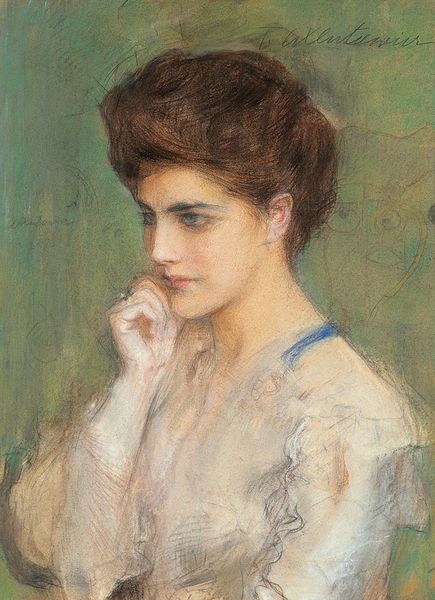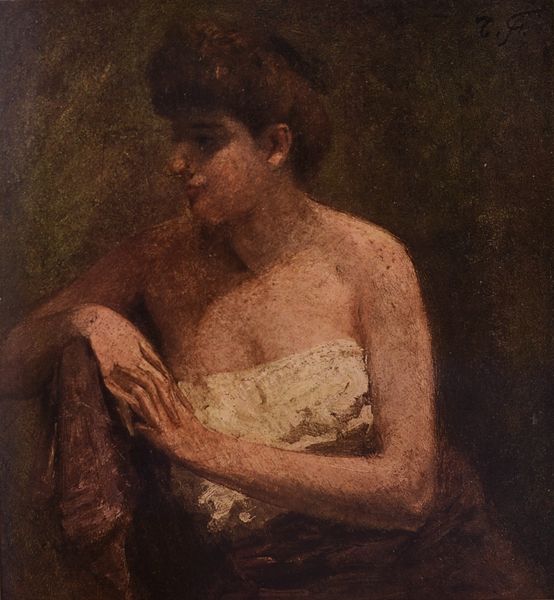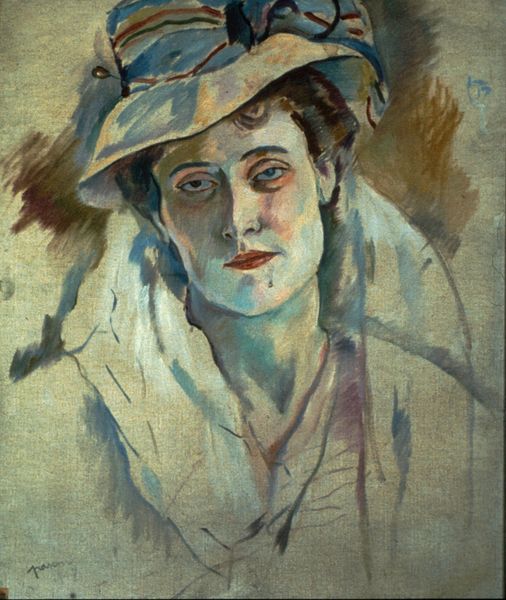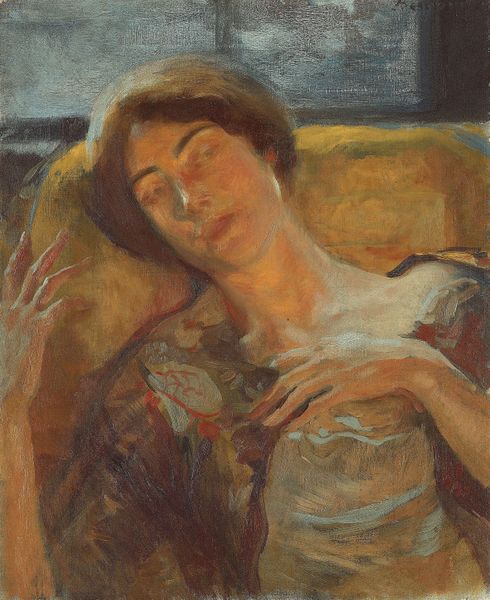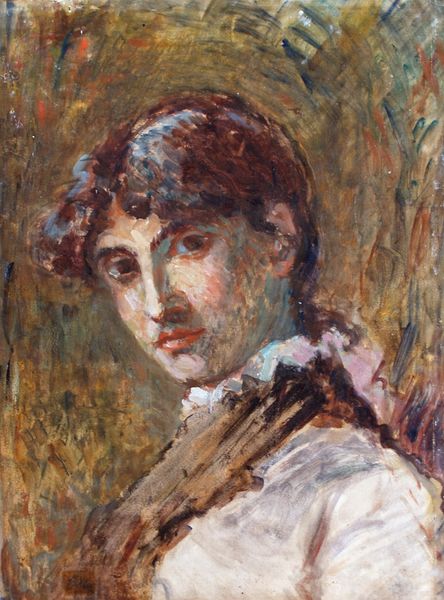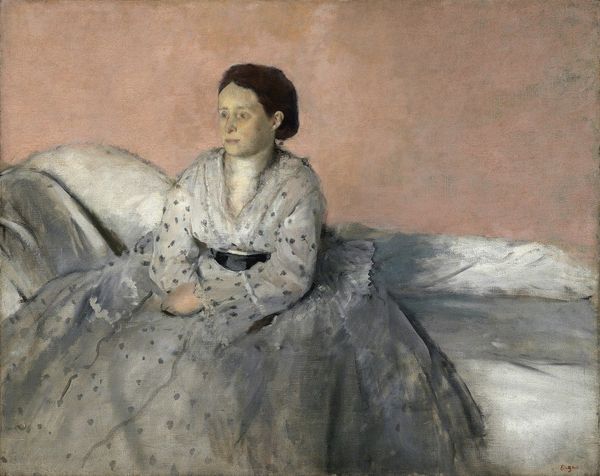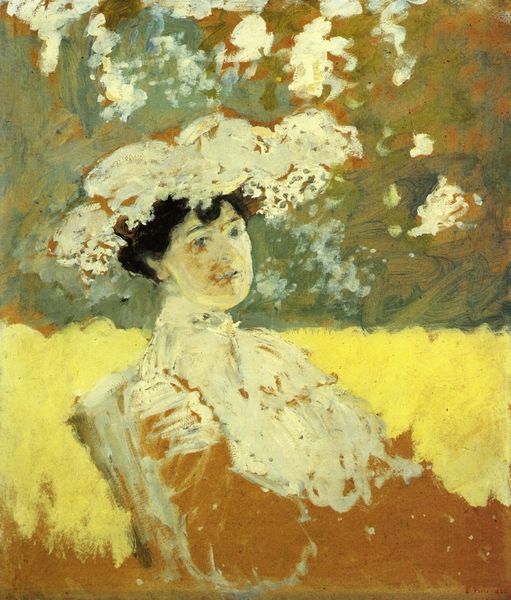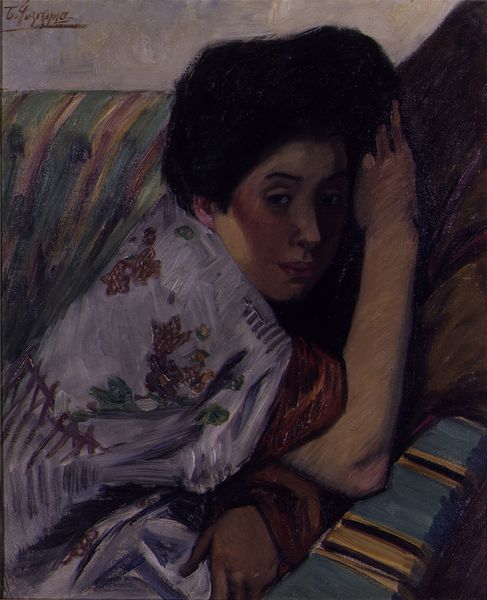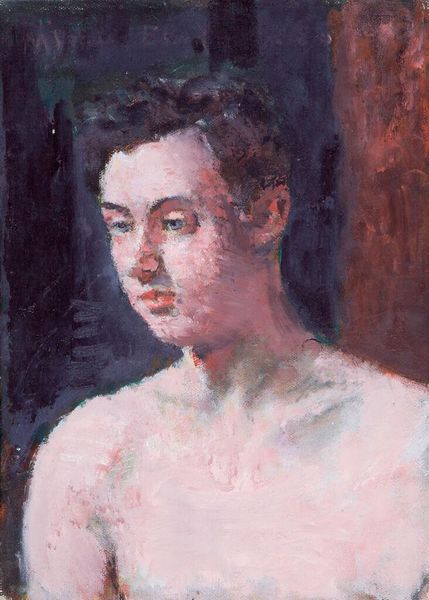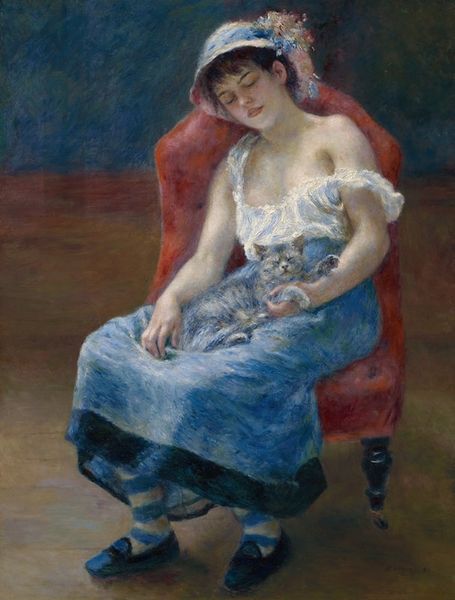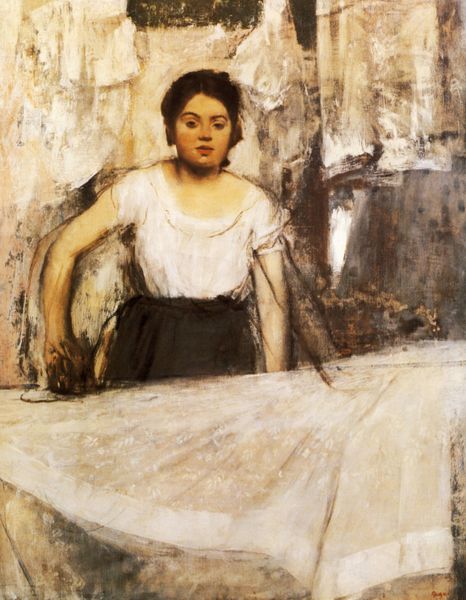
Copyright: Public domain
Editor: This is Mary Cassatt's pastel on paper, "Portrait of Mrs. H. O. Hevemeyer," from 1896. I'm immediately struck by the sitter’s direct gaze. It feels so intimate, almost as if she's challenging the viewer. How do you interpret this work? Curator: I see this piece as more than just a portrait; it's a statement about female identity and agency in the late 19th century. The Hevemeyer family were prominent art collectors and quite progressive, championing Impressionism when it was still considered radical. How do you think that might play into Cassatt's portrayal of Mrs. Hevemeyer? Editor: Well, the confidence in her eyes makes me think she knows her worth, which may be why she accepted such "radical" paintings, going against what others would tell her. Do you think the way Cassatt renders Mrs. Hevemeyer, especially with those slightly unconventional, bold strokes of pastel, reinforces that progressive stance? Curator: Precisely. Cassatt, as a woman artist herself, was navigating a patriarchal art world. By depicting Mrs. Hevemeyer with such a strong presence and using a style that broke from academic tradition, she subtly challenges conventional portrayals of women. Think about the power dynamics at play when women artists represent women patrons, actively shaping their own narratives. How does that perspective shift our understanding? Editor: That’s such a helpful lens. Seeing Cassatt as actively reshaping the narrative makes Mrs. Hevemeyer seem even more modern, more in control of how she's seen, instead of just being passively looked at. Curator: Exactly. It brings to light the ways in which both artist and sitter collaborated to defy social expectations through art. I see resistance through line and color in the domestic sphere. Editor: This makes me think differently about portraiture as a whole! I now see it as not just about likeness but about power, identity, and social commentary. Thank you! Curator: Absolutely. The politics and the gaze – key factors when encountering these images. Always dig below the surface.
Comments
No comments
Be the first to comment and join the conversation on the ultimate creative platform.
